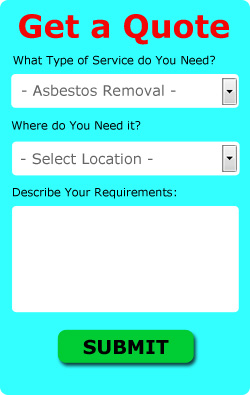Asbestos Removal Hornsea East Yorkshire (HU18): Somewhere around 5,000 people in the UK die from illnesses caused by asbestos exposure every year, based on figures published by the Health & Safety Executive (HSE). You need to contact an expert in the asbestos industry before any work begins, if you discover asbestos in your home or business premises in Hornsea. You should stop work straight away and bring in an authorised asbestos removal specialist, if during building works you believe that you have come across some asbestos. Having the experience and skills to evaluate the situation, an asbestos removal specialist in Hornsea is the right person to call.
When dealing with asbestos removal in Hornsea there are specific situations where a non-licensed company can carry out the work required. However, due to the long term effects to health from asbestos dust and fibres, it's always sound practice to use experienced asbestos removal professionals. An experienced Hornsea asbestos removal contractor will be Health and Safety Executive trained and licensed, and will follow all the required laws and guidelines to safely complete the removal from your home or business premises.
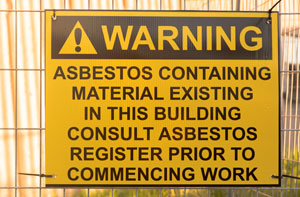
HEALTH DANGERS FROM ASBESTOS
Asbestos when left untouched isn't harmful to health. It is only if you damage it in any way that it can discharge its dangerous particles into the atmosphere. If such particles are breathed in they enter the lungs and become trapped, causing a disease known as asbestosis. These particles or fibres are also a contributing factor to the onset of lung cancer.
The lungs' scarring, caused by asbestos fibres, is irreversible, and no cure is known for asbestosis.
The symptoms of asbestosis may include:
- Wheezing
- Acute Shortness of Breath
- Extreme Fatigue
- Chronic Cough
- Pain in the Shoulders or Chest
You need to seek expert medical advice if you think you have been exposed to asbestos over a period of time and you're experiencing symptoms from the above list.
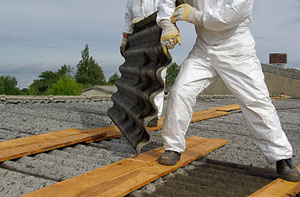
WHAT YOU NEED TO CONSIDER WHEN YOU'RE DEALING WITH ASBESTOS
Properties and structures that were constructed from 1945 - 1985 are much more likely to contain asbestos than those built after this; asbestos was banned for construction purposes in the British Isles in 1999. If your property was constructed in this time frame you should be aware of the possibilities of finding asbestos when doing remodelling works. Asbestos was used in items such as pipe lagging, boiler insulation and ceiling tiles and was also used in the form of a spray as an ideal insulation and fire proofing material.
If you do discover asbestos in your home in Hornsea, it doesn't represent an immediate danger or threat. Remember that asbestos is only a hazard to health if interfered with. There are some cases whereby it could be better to leave the asbestos in situ, ensuring it is not damaged or disturbed. If unclear about the condition of the asbestos or its potential risks, you should seek the advice of a qualified asbestos company or surveyor in Hornsea.
There are different levels of risk associated with the wide range of asbestos materials that could be identified in older homes. Roofing panels and asbestos cement sheets are low risk products, whilst loose fill insulation, asbestos insulation boards and pipe lagging are all classed as high risk. A licensed asbestos removal firm in Hornsea is able to provide you with a risk-free method for removing all varieties of asbestos that could be identified in your property or home.
Depending on the kind and use of the premises, and if the asbestos material is in a form that needs a licenced contractor, then the local authority or the Health & Safety Executive should be informed. To prevent and limit any harmful exposure to asbestos fibres and particles, the Control of Asbestos Regulations 2012 is the legal document that must be followed by your authorised asbestos removal company.
You are likely to be prosecuted if you undertake any asbestos removal work that needs a license from the Health & Safety Executive if you do not hold that particular license.
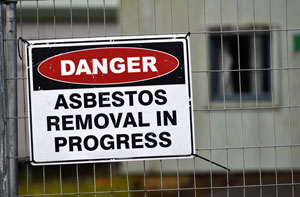
THE DISPOSAL OF ASBESTOS
Asbestos material of any type, once removed from your Hornsea property or home, is regarded as hazardous waste. It is critical that any asbestos hazardous waste is disposed of in a safe and proper manner, following the laid out instructions from the local authorities. A certified asbestos removal firm in Hornsea will follow all guidelines and regulations outlined by the Health & Safety Executive and the local authority.
If the asbestos has been damaged, or if it is loose fibre asbestos, it must be moved in accordance with the Carriage of Dangerous Goods Act 2009. For safe transport of these hazardous asbestos materials, a waste carrier's license is required and the asbestos waste can only be processed in a government endorsed hazardous waste centre. For peace of mind the employment of a licensed Hornsea asbestos removal company will give them the obligation to follow all legislation and rules, including the storage and safe-keeping of all disposal paperwork for 3 years, at least just in case it's needed for reference later.
THE WORK PHASES
Before any actual work starts on removing any suspicious materials from your Hornsea home or property you'll want to confirm if it is in fact asbestos. Surveys and inspections by registered and licensed asbestos removal companies or asbestos surveyors are the only way to accurately substantiate the asbestos threat in your property or home. If you decide not to carry out a professional inspection on an older house or property, you need to assume there is asbestos present somewhere and take all the necessary precautions.
A qualified asbestos surveyor should be independent of the asbestos removal company, and will perform any sample-taking, surveys and testing.

If the survey reveals asbestos materials that require a licensed specialist for removal, the HSE must be advised at least 2 weeks prior to the implementation of work. All legal documentation and necessary papers will be provided by the asbestos removal contractor and needs to include: 1. A strategy for the asbestos testing, plus the techniques for clearing up the site after work completion by following the 4 stages of clearances. 2. All relevant training certificates for workers as well as all contractor certifications covering risk assessments, work licenses, hazardous waste disposal and any other papers required by law. 3. A work statement displaying the regulations that are going to be adhered to. 4. A Certificate of Reoccupation from the appropriate authorities after the four stage asbestos clearance procedure has been finished.
All health & safety measures for the employees, including PPE (personal protective equipment), will be supplied by the asbestos removal contractor and they will ensure that all dangerous asbestos waste is safely removed to a registered disposal site.
AFFILIATIONS, PROFESSIONAL ASSOCIATIONS and QUALIFICATIONS
To help you determine which asbestos removal contractor in Hornsea to pick out, you can ask if they are affiliated with or members of any of the professional bodies and associations in the industry.
ARCA - The Asbestos Removal Contractors Association, represents professional individuals and companies working within the asbestos industry. They dedicate themselves to the promotion of safe working practices by providing training, guidance and support on all matters pertaining to the asbestos removal trade.
UKATA - The UK Asbestos Training Association (UKATA) is a nonprofit organisation that's focused on improving standards within the asbestos industry, by providing the highest quality training. From large companies to homeowners, it offers instantly recognisable qualifications that can be validated and checked through their online search facility.
ATaC - Asbestos analysts, surveyors and testing facilities will normally be members of the Asbestos Testing and Consultancy Association. ATaC is an approved UKAS affiliate and offers recognition for its members in this specialist arena.
Asbestos removal services and asbestos surveys are available in Hornsea and additionally in nearby villages and towns like Long Riston, Barmston, Coniston, Leven, Skipsea, Beeford, Seaton, Great Hatfield, Skirlaugh, Sigglesthorne, Brandesburton, Dunnington, North Frodingham, Ulrome, and in these postcodes: HU18 1RH, HU18 1ND, HU18 1ER, HU18 1JG, HU18 1DW, HU18 1AP, HU18 1RB, HU18 1QX, HU18 1ET, and HU18 1PW. Local Hornsea asbestos removal companies will likely have the postcode HU18 and the dialling code 01964. Verifying this should confirm you access locally based providers of asbestos removal. Hornsea home and business owners are able to benefit from these and countless other asbestos related services. By simply clicking on the "Quote" banner you can get asbestos removal quotes from specialists nearby.
Asbestos Tile Removal Hornsea
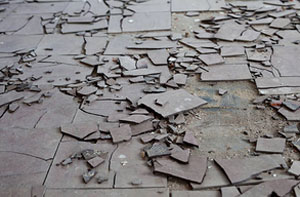
Proper safety measures and careful handling are required for asbestos floor tile removal, a procedure that is challenging and hazardous. The heat-resistant qualities and durability of asbestos, a naturally occurring mineral, led to its frequent usage in flooring tiles in the past. However, asbestos fibres becoming airborne and being inhaled have been linked to various health conditions, such as mesothelioma, asbestosis and lung cancer.
Removing asbestos floor tiles mandates specialist protective clothing and equipment, such as respirators, disposable coveralls and gloves, to prevent exposure to the harmful asbestos fibres. It is essential to follow the guidelines set out by regulatory bodies, such as the HSE, to ensure safe removal and disposal of the waste and floor tiles.
To decrease the danger of asbestos exposure, the removal of asbestos tiles should be performed exclusively by qualified professionals with the required training and experience. Consulting with an asbestos removal specialist is advisable before taking any action to remove asbestos, as the existence of asbestos in a building or home does not always imply danger.
Artex Removal Hornsea
Putting Artex coatings on the walls and ceilings of houses in Hornsea, was a popular activity during the nineteen seventies and eighties. This product was incredibly effective for concealing cracks, flaws and discrepancies in these surfaces, due to its pliable, textured finish. For ceilings, Artex typically replaced the 60s fashion of polystyrene tiles which had been identified as a fire risk.
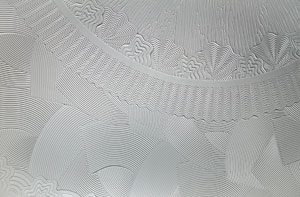
The irony is that these folks were simply replacing one hazardous material for another, given that Artex contains asbestos. Of course, when this was happening, the true dangers of asbestos weren't fully appreciated and it wasn't until later that the risk to health was understood by the general public. Because a lot of properties in Hornsea still have walls and ceilings that are covered in Artex, you'd imagine that this would be a serious concern, however, as this product is mostly harmless as long as it isn't disturbed in any way, it should not present too much of an issue.
If you have a dwelling in Hornsea that's got Artex on the ceilings you mustn't attempt to get it off yourself, although textured coating removal is classed as non-licenced work. To safely remove the Artex, you should call in a local asbestos removal contractor, who'll give you a quote for both testing and removing the offending textured coatings. (Tags: Artex Removal Hornsea, Artex Asbestos Removal Hornsea, Artex Removing Hornsea, Textured Coating Removal Hornsea).
Asbestos Encapsulation
In certain situations when asbestos is discovered inside a structure in Hornsea it may not always be necessary to remove it, but alternatively encapsulate the ACM's (asbestos containing materials). With asbestos encapsulation, the ACM's are encased in a protective layer which may involve a cloth wrap, a rigid board or a sprayed or painted coating, to both stop the hazardous asbestos fibres from being released and shield the ACM from the chances of being compromised. A detailed asbestos risk assessment will need to be conducted on the asbestos containing materials in order to check whether or not they can be encapsulated.
Land Remediation Services
Land or ground remediation involves the cleaning and restoration of soil or groundwater that's been polluted by contaminants. This method is commonly utilized in areas where groundwater or soil has been contaminated with hazardous substances, such as heavy metals, pesticides or industrial chemicals. The primary purpose of ground remediation is to lower the levels of pollutants to a safe level, thus rendering the land usable again. There are a number of different methods of ground remediation, including excavation, bioremediation and soil washing. The particular remediation strategy utilised will be influenced by a variety of factors, including the extent and nature of the contamination, in addition to the site conditions. The process of ground remediation is often a complicated and lengthy undertaking that demands leading-edge tools and specialised knowledge. Collaborating with knowledgeable experts is vital to ensuring the remediation process is carried out safely and efficiently.
Types of Asbestos
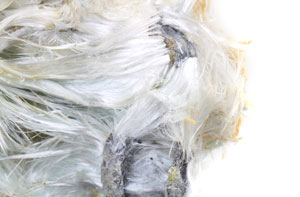
Regularly used in both the manufacturing and construction industries from the late nineteenth century until it was banned altogether in Great Britain in 1999, asbestos is a fibrous material that occurs naturally on every one of the world's continents. There are six specific minerals which are typically classified as asbestos, namely - chrysotile, crocidolite, amosite, tremolite, anthophyllite and actinolite, and they all belong to the 2 families amphibole and serpentine.
The 3 most widely used of these were; amosite, crocidolite and chrysotile, so it's these main types that we'll be covering in this article.
Crocidolite (Blue Asbestos) - Part of the Amphibole family of silicate minerals, crocidolite (often called blue asbestos), is regarded as the most dangerous type of asbestos. It's often found in pipe lagging, spray-on coatings, cement products and plastics, and was used in the insulation of steam engines.
Chrysotile (White Asbestos) - Chrysotile asbestos, often known as white asbestos, was the most commonly used of all these materials. In Hornsea homes and business premises, it can still be found in floors, roofs, insulation, ceilings and walls. It can also be found in many manufactured products such as gaskets, brake linings, boiler seals and pipe & duct insulation. Chrysotile asbestos is part of the Serpentine family of silicate minerals.
Amosite (Brown Asbestos or Grunerite) - Typically used in the manufacture of roofing materials, vinyl tiles, cement sheets, thermal insulation products, pipe insulation and insulating board, Amosite asbestos (grunerite) is also known as brown asbestos. It was mined mostly in South Africa.
Interesting Fact: Scarily, asbestos was even used in the manufacture of cigarette filters, so during the nineteen fifties smokers were unknowingly inhaling this dangerous stuff directly into their lungs. The thing that makes it even more unbelievable is that it was touted as a health benefit at the time (1952-56)! Indeed, the makers of Kent Micronite cigarettes, namely the American based Lorillard Tobacco Company, must get the "blunder of the century" award for convincing smokers to stick the most harmful form of asbestos fibres (crocidolite) into their mouths. The legal fallout of this unfortunate outrage continues to this day, as million dollar lawsuits are still being processed over 60 years later. Many of the claimants were affected by an aggressive and rare sort of cancer called mesothelioma.
Asbestos Removal Near Hornsea
Also find: Skirlaugh asbestos removal, Leven asbestos removal, Seaton asbestos removal, Barmston asbestos removal, Coniston asbestos removal, Skipsea asbestos removal, Brandesburton asbestos removal, Ulrome asbestos removal, Great Hatfield asbestos removal, Long Riston asbestos removal, Dunnington asbestos removal, Sigglesthorne asbestos removal, North Frodingham asbestos removal, Beeford asbestos removal and more. Almost all of these locations are serviced by asbestos removal specialists. Home and property owners in these localities can acquire quotes for asbestos removal by clicking here.
 Asbestos Removal Hornsea
Asbestos Removal Hornsea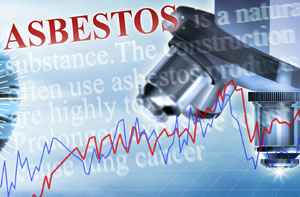 Asbestos Removal Near Hornsea
Asbestos Removal Near Hornsea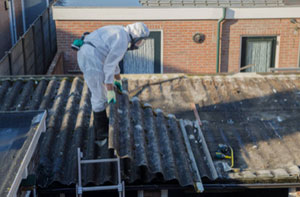 Asbestos Removal Companies Hornsea
Asbestos Removal Companies HornseaAsbestos Removal Tasks Hornsea Asbestos removal experts will be able to help with soft-strip demolition, ground remediation, hazardous waste removal, asbestos air monitoring, the identification of asbestos containing materials, site asbestos investigations, soft strip demolition, asbestos risk management, corrugated asbestos removal Hornsea, building waste removal in Hornsea, household asbestos removal Hornsea, asbestos roof tile removal, house clearance in Hornsea, asbestos tile removal in Hornsea, the removal of asbestos popcorn ceilings, asbestos replacement in Hornsea, commercial asbestos removal Hornsea, commercial asbestos survey, asbestos risk assessments, asbestos inspections in Hornsea, asbestos van collection, asbestos disposal, asbestos removal price quotes, asbestos dismantling, asbestos waste collection, residential asbestos survey, asbestos garage roof removal Hornsea, asbestos abatement, fly tipping clearance Hornsea, Artex removal, crocidolite blue asbestos removal, domestic asbestos removal Hornsea, lead paint testing, asbestos consulting, and other hazardous waste related work. Listed are just a few of the tasks that are handled by people specialising in asbestos removal. Hornsea companies will be delighted to keep you abreast of their entire range of services.
More: Asbestos Experts, Artex Removal, Asbestos Inspections, Asbestos Encapsulation, Artex Removal, Biohazard Removal, Biohazard Removal, Biohazard Removal, Asbestos Risk Assessment, Asbestos Survey, Asbestos Encapsulation, Asbestos Management, Asbestos Experts, Asbestos Abatement, Environmental Cleaning, Asbestos Collection, Asbestos Abatement, Asbestos Risk Management, Asbestos Abatement, Asbestos Collection, Asbestos Collection, Asbestos Disposal, Artex Removal, Asbestos Testing, Asbestos Risk Assessment, Asbestos Roof Removal, Cheap Waste Removal, Removal Contractors, Environmental Cleaning, Asbestos Inspections, Asbestos Removal, Biohazard Removal, Asbestos Risk Assessment, Asbestos Ceiling Removal, Asbestos Abatement.
TOP - Asbestos Removal Hornsea
Asbestos Removal Specialists Hornsea - Asbestos Encapsulation Hornsea - Hazardous Waste Removal Hornsea - Industrial Asbestos Removal Hornsea - Biohazard Removal Hornsea - Asbestos Disposal Hornsea - Asbestos Removal Quotes Hornsea - Asbestos Removal Hornsea - Domestic Asbestos Removal Hornsea

